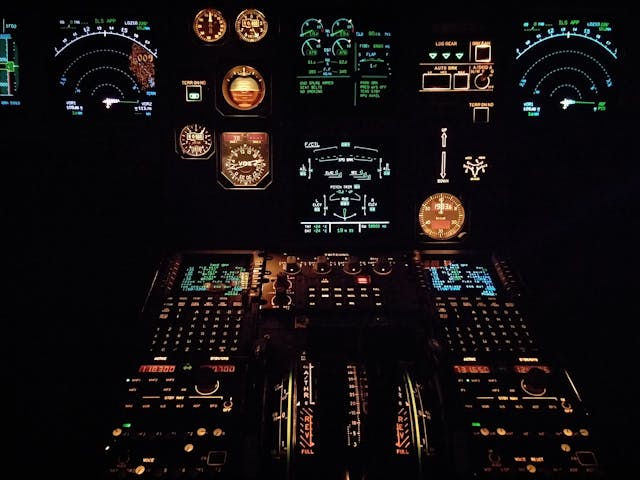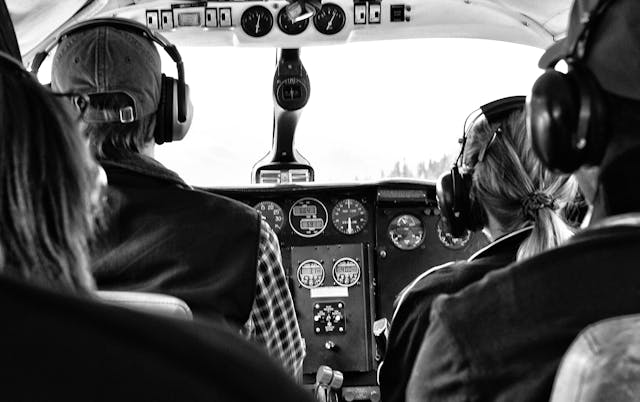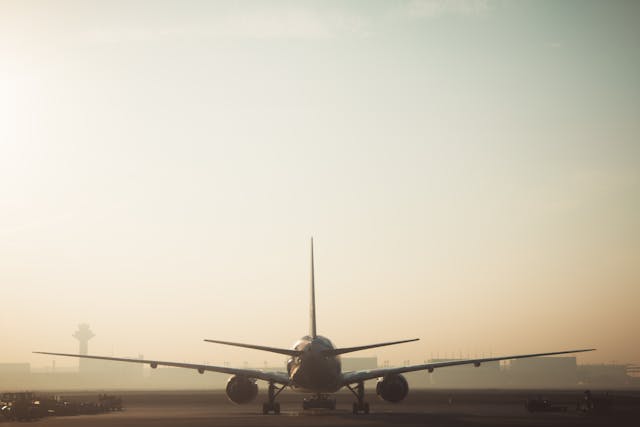- Enhanced simulation technologies offer pilots realistic training experiences, reducing risks and costs associated with actual flight training.
- Personalized learning approaches ensure each pilot’s strengths are maximized while areas of improvement are effectively addressed.
- Regular assessments and timely feedback are crucial for cultivating a culture of ongoing learning and skill enhancement.
- Future-oriented curriculums equip pilots with the necessary skills for handling next-generation aircraft and upcoming industry changes.
- Innovation, adaptability, and a commitment to excellence are key to preparing pilots for tomorrow’s aviation challenges.
Aviation is a field where precision, safety, and skill are paramount. The progression in aircraft technology is profound, but equally crucial is the continuous evolution of aviation education, ensuring pilots are adept and prepared for the skies they will command. This blog post aims to explore the cutting-edge innovations shaping the way pilots are trained, the impact on their skill sets, and potential outcomes for the industry.
A Glimpse into the Evolution of Aviation Education
From the dawn of aviation, education for pilots has transitioned from a patchwork of experiences to becoming one of the most sophisticated and structured programs in any industry. Early pilots learned largely through trial and error, but today’s aviators benefit from advanced training programs that precisely mirror real-world scenarios. The importance of this evolution cannot be overstated; as aviation continues to grow and face new challenges, the need for integral, innovative training methods becomes even more pressing.
The Integration of Innovation in Aviation Training
In an industry where the stakes are sky-high—no pun intended—incorporating innovative teaching methods is beneficial and necessary. Recent trends in aviation education are revolutionizing how future pilots are honing their craft.
Emerging Trends in Aviation Training
Virtual Reality (VR) and Simulation-Based Training
The surge of VR technologies has opened new horizons for aviation education. Realistic flight simulations allow trainees to experience cockpit environments, complex maneuvers, and diverse weather conditions without leaving the ground. This has dramatically reduced training costs and risks associated with inexperienced pilots in the skies while improving safety and learning efficacy.
Simulation-based training has expanded to incorporate critical decision-making under pressure. By immersing pilots in emergency scenarios, instructors gauge and develop their ability to respond to unforeseen challenges, a skill set vital to a pilot’s competence.
Adaptive Learning Technologies
Thanks to adaptive learning technologies, personalized learning is no longer a distant dream but a present reality. These platforms assess each individual’s strengths and weaknesses and tailor educational content to their unique learning pace and style. In aviation, where the confluence of theoretical knowledge and practical skills is crucial, customized training curricula have significantly improved knowledge retention and hands-on proficiency.
Furthermore, adaptive learning systems provide valuable analytics, offering instructors insights into students’ progression and customizing interventions where necessary.
Integrating Commercial Multi-Engine Training

Simultaneously, innovations in commercial multi-engine training have made advanced flight experiences more accessible. Pilots can learn to operate multi-engine planes through high-fidelity simulators that replicate the behavior of these complex aircraft in real time. This streamlines the training process and ensures thorough understanding and muscle memory for flying conditions not offered in traditional single-engine training.
The shift towards comprehensive commercial multi-engine training acknowledges the fleet composition of commercial airlines, where twin- and quad-engine aircraft are standard, necessitating a more robust instructional approach.
Gamification in Learning
One of the most engaging trends in aviation education is the application of gamification, a technique that incorporates game elements into educational content to increase retention and enjoyment. Complex flight procedures and scenarios are turned into challenges and quests, making learning fun and competitive. This stimulates interest and fosters a more interactive and immersive learning environment.
Innovative aviation training programs have been seen using leaderboards, point systems, and avatars, effectively gamifying the learning process and spurring healthy competition among trainees.
Collaborative Learning and Peer Instruction

Education in any field is often an isolated experience, but breakthroughs in aviation training have recognized the value of collaboration. Group-based learning encourages peer-to-peer interaction, knowledge sharing, and the social construction of learning. In practice, this allows students to learn from their instructors and one another, promoting a deeper understanding and more diverse skill development.
Peer instruction methods also place students in the role of teachers, reinforcing their understanding through explanation and gaining new perspectives.
Techniques for Effective Aviation Education
Competency-Based Training
The aviation industry is transitioning to competency-based training (CBT) models that focus on developing pilots’ skills to perform tasks competently and safely. Rather than a time-based approach, CBT emphasizes the acquisition of specific competencies at the trainee’s own pace. This approach ensures that pilots are thoroughly prepared for operational challenges, leading to a more homogeneous level of skill across the industry.
Competency-based training also streamlines the path to a pilot’s license, making it more efficient for aspiring aviators to enter the workforce.
Continuous Assessment and Feedback
Assessment and feedback are cornerstones of effective learning. In aviation, where the margin for error is slim, continuous evaluation ensures that pilots reach their full potential and address any areas of concern.
Implementing regular assessments and timely feedback drives improvement, contributing to heightened awareness, precision, and a commitment to lifelong learning among pilots. It also helps instructors tailor their teaching to individual student needs, ensuring every pilot graduates with a high standard of skill.
Future-Oriented Curriculum Development
Developing training curriculums that encompass current regulations and best practices and anticipate future industry needs is a priority. In an industry as dynamic as aviation, the only certainty is change, and education must evolve in tandem.
Futuristic curriculums are designed to equip pilots with the knowledge and skills to operate next-generation aircraft and adapt to upcoming regulatory changes and environmental concerns. Proactive curriculum development is vital in shaping highly adaptable and forward-thinking pilots.
Conclusion
The future of aviation education is a tapestry woven with innovation, adaptability, and a relentless pursuit of excellence. By staying abreast of the latest trends and adopting cutting-edge techniques, educational institutions can ensure that the aviators of tomorrow will be ready for the challenges and opportunities that await them in the air. Through immersive technologies, personalized learning experiences, and a collaborative environment, the skies are set to become safer and more accessible than ever.






